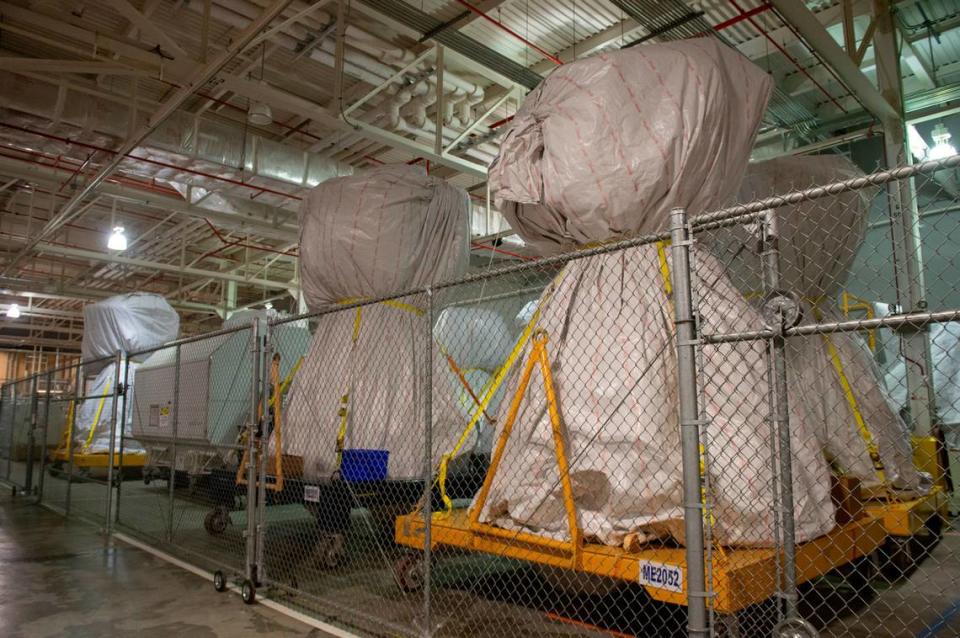Did you hear that? NASA, Aerojet Rocketdyne complete key engine certification tests
A loud rumbling could be heard around lunchtime in South Mississippi on Wednesday as NASA tested a key piece of equipment for its upcoming missions to the moon.
The rumbling came from NASA’s Stennis Space Center in Hancock County as NASA ran a hot fire test of one of its RS-25 engines. They’re being developed for use on rockets in later missions in NASA’s Artemis program, a series of at least five planned missions designed to bring people back to the moon.

The test was a key step in NASA’s push to get people back to the moon. It was likely the final test in a series to certify the design for new versions of the RS-25 engine — an updated version of a type of engine that was previously used on Artemis 1 and in the Space Shuttle Program — that will be used on Artemis 5 and later.
“From here, a quarter-mile away, it looked like it went fine,” said Maury Vander NASA’s Chief of Test Operations for NASA after witnessing the test. “The fact that it went full duration means, at least initially, it gives you confidence that it went well.”
A more extensive review will determine how the engine performed during the test, Vander said. But there were no obvious failures, and the test lasted the full time of over eight minutes, signaling to Vander an initial success.

The RS-25 engine tested Wednesday was a development engine — essentially a prototype that won’t actually be used on any of the actual Artemis Space Launch System (SLS) rockets. But it’s a version that is tested at more extremes in preparation for the actual engines.
Wednesday’s test was the 12th the engine underwent since September 2023, with each test measuring the engine at different power levels, said Michael McDaniel, General Manager for Aerojet Rocketdyne an L3 Harris company, the company that is producing the engines.
The SLS rockets used in each Artemis mission will be equipped with four RS-25 engines. Each RS-25 engine costs between $50 to $80 million and is assembled and built at Stennis Space Center before being tested at Stennis’ test stands.

Future tests at Stennis
While the large buffer zone surrounding Stennis Space Center helps greatly reduce the noise impact on Mississippi Coast residents, many people have reported hearing noise and rumblings from previous tests.
This fall, residents will hear more rumbling as NASA plans to test Aerojet Rocketdyne’s production engines as well. Each engine that is equipped onto the SLS rocket is only tested once.
Testing engines isn’t the only thing happening at Stennis. Stennis is also adjusting its B1 and B2 test stand to accommodate the Exploration Upper Stage tests. The Exploration Upper Stage will be a section of the rocket on Artemis’ later missions that will carry NASA’s Orion spacecraft and heavy cargo to the moon for the Artemis lunar missions.

Here’s when the Artemis missions plan to launch:
Artemis 2, the first crewed Artemis mission around the moon, is planned for September 2025.
Artemis 3 is planned to land the first astronauts near the lunar South Pole in September 2026.
Artemis 4, the first mission to the lunar space station, is planned for 2028.
Artemis 5 is planned for 2029.







 Yahoo Movies
Yahoo Movies 
